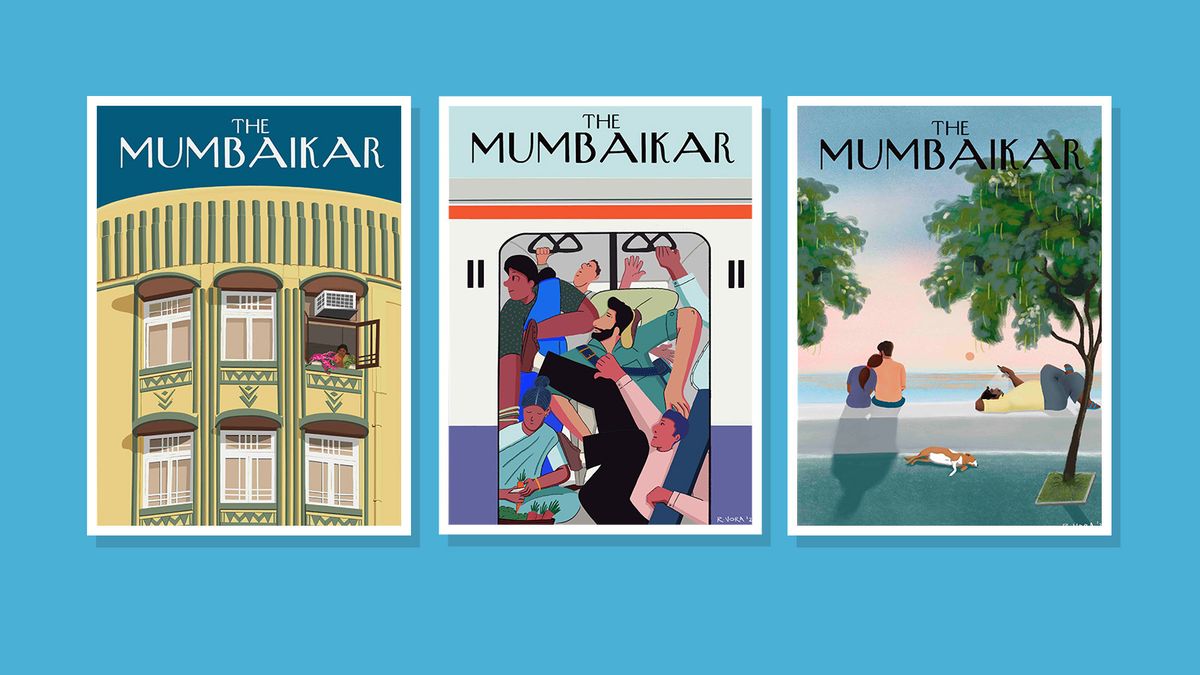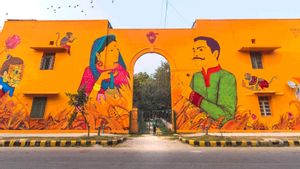Rachita Vora, a self-taught digital artist and printmaker from Mumbai, who is also the co-founder and director of India Development Review (IDR)—India’s first independent online media and knowledge platform for leaders in the development community, produced in partnership with Ashoka University's Centre for Social Impact and Philanthropy—takes us through ‘The Mumbaikar’ project. The series began as a personal project and pays tribute to Mumbai and homage to the iconic magazine covers of The New Yorker. Vora splits her time between Mumbai and Goa. We spoke to Vora to know more about her New Yorker-style love for Mumbai and why she chose Mumbai.
Edited Excerpts:
1. How did the art project, The Mumbaikar, start?

I’ve lived in both cities—Mumbai and New York. And to me, in so many ways they are more similar than they are different. The recent construction and pollution notwithstanding, Mumbai is one of the world’s great cities, and I felt we needed ‘The Mumbaikar’ of our own—if not in terms of literature and poetry, then at least for the art. I never expected it to garner the kind of interest it has—both among people living in the city, as well as Mumbaikars who are based abroad.
2. Why choose The New Yorker style?
The New Yorker magazine covers are such a wonderful tribute to New York City, and they have been the inspiration for this series. Plus, the play on words with ‘The Mumbaikar’ for this series is a nice coincidence.
3. Is there a similarity between New York and Mumbai?
Mumbai and New York have so many similarities. Both are great cities—with incredible art and culture, diversity, food, and people from all over. When I lived in New York though, two things that reminded me most of Mumbai: the energy and pace of life there, and the density of people.
4. Your images steer clear of the usual visual tropes that have come to define Mumbai. How do you choose your subjects?
When I began working on the series, I decided I wanted to try and capture moments and sides of the city that you won’t find on a postcard or tourist souvenir—no Gateway of India, no auto-rickshaws, no Rajabai Tower. I wanted to depict aspects that would resonate with a Mumbaikar. Second, I chose to illustrate things that meant something to me and my own history with the city. But mostly, I wanted to have fun with it.
5. The idea for the recent artwork in the series is crowdsourced. Tell us more…
As the series began to get popular, I decided to crowdsource ideas from Mumbaikars for the eighth piece. So on social media, I asked them to tell me the memories and places they most associate with the city. I was overwhelmed with the response! There were so many unexpected and wonderful ideas—sandwich-wallahs, Dadar flower market, Irani cafes, the ‘champi’ guys on Carter Road, tetrapods, and the list goes on. The eighth piece in the series features the Dadar flower market and has been the most popular one so far on Instagram, where the entire series resides.
6. You are not a trained artist but you took to digital art and linocut printmaking as hobbies last year….
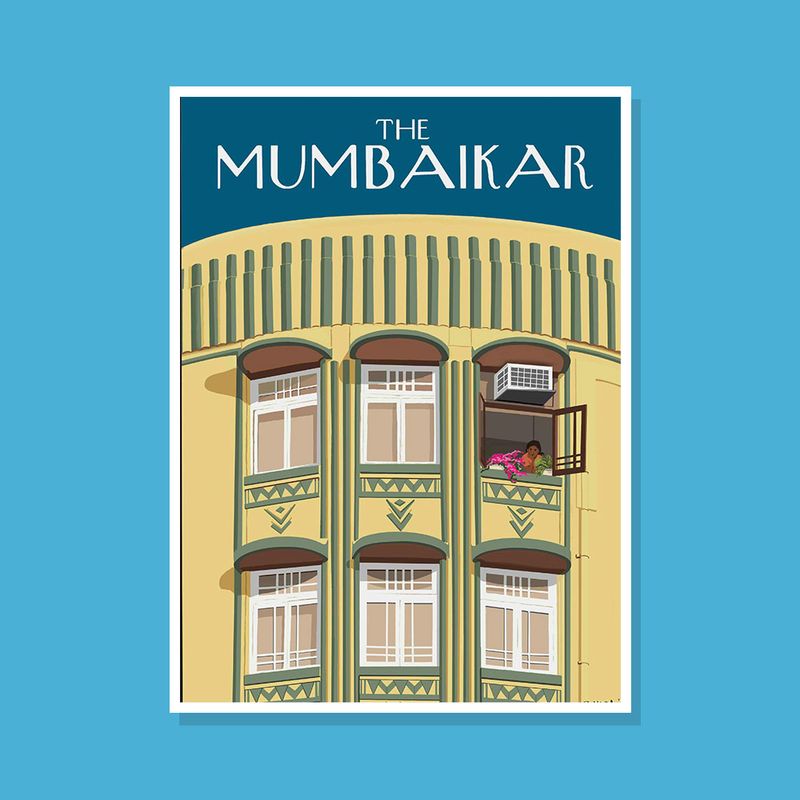
My mother is an artist, so I inherited that talent from her and always loved making art as a child. I never pursued it professionally though, other than a few art classes during my undergraduate education at Yale University. During the pandemic, I found art again. It was a great excuse to re-enter my childhood in a way. I taught myself linocut printmaking, and also began painting digitally.
7. How has Mumbai changed over the years? What do you miss most about the city? What has remained a constant?
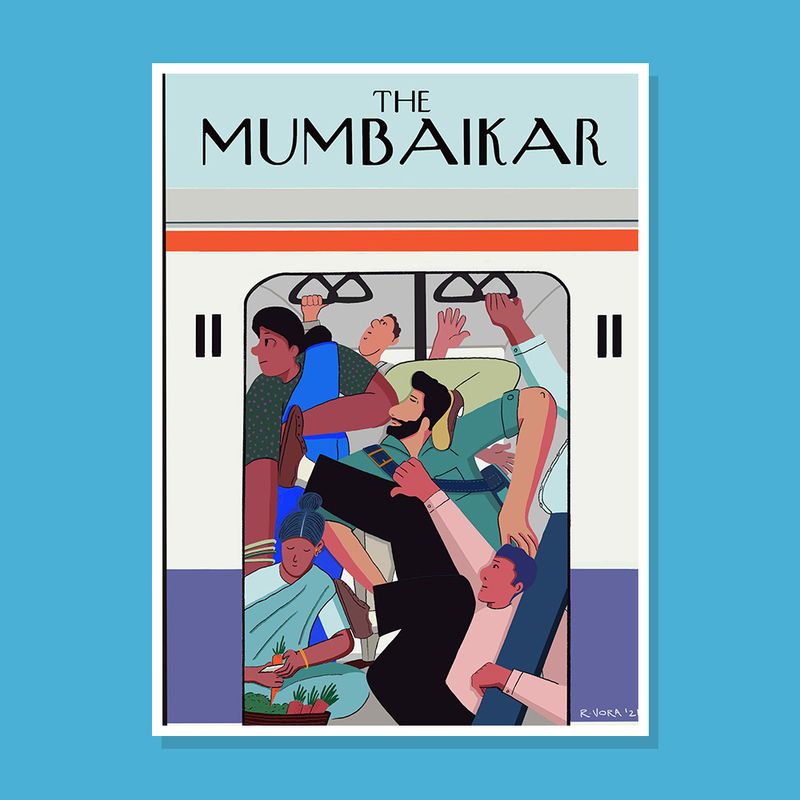
It has changed in so many ways and so dramatically—I’m not sure there’s ever enough space to respond fully to this question!
8. Would you like to explore other cities too through this medium?
I haven’t decided yet. If I expand beyond The Mumbaikar, I’d like to start with places I know reasonably well. I think that’s important to stay true to the core idea of the series, which is to feature timeless things about a place that resonates with its residents.
9. Tell us about your cartoon series, This Nonprofit Life.
I lead a digital media platform called India Development Review (IDR), which features cutting-edge ideas, lessons and insights are written by and for the people working on some of India’s toughest problems. I started the cartoon series 'This Nonprofit Life’ as part of our Humour section on the website. As the title suggests, the cartoon offers a humorous take on what it’s like to work in the field of social impact. The most recent one calls out Jeff Bezos’ ‘Marie Antoinette’ moment at COP26. You can find all cartoons on idronline.org.
10. Of all the images you drew for The Mumbaikar, which is the closest to your heart and why?
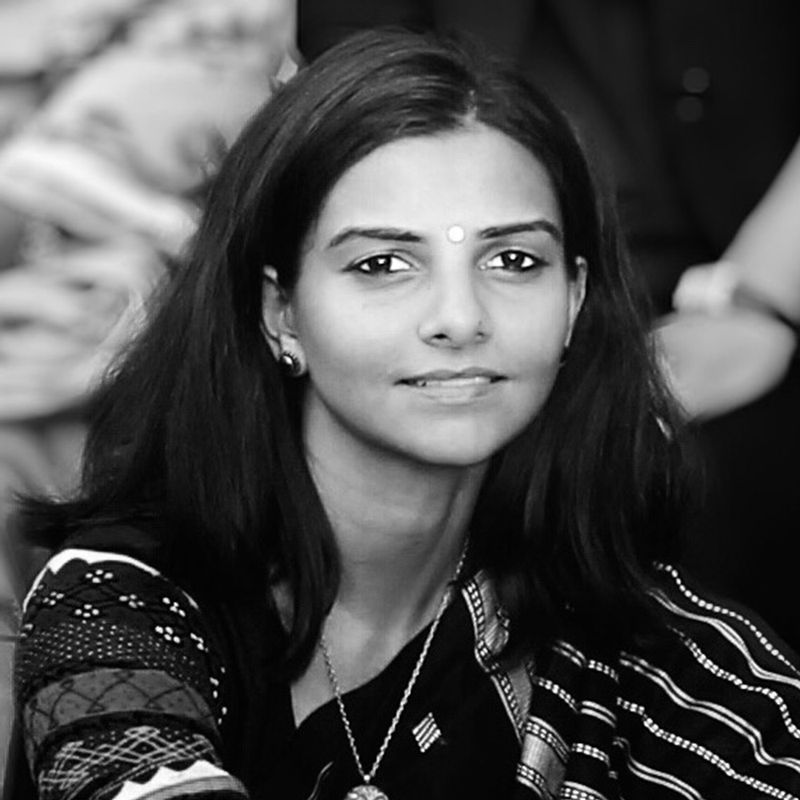
It’s impossible to choose. There are parts of every print that remind me of childhood memories, and some of my best experiences with this city. For instance, the women cutting vegetables on the Mumbai local in the evenings, or the uncle who is relaxing on the parapet at Marine Drive right next to the lovers who are enjoying the sunset view. Or even the pair of prints, Mumbai by night and Mumbai by day, which show the stark contrast between the tall glass buildings and the vast stretches of informal housing that together are a fixture of any view of the city.
11. What next? Do we see an exhibition on the horizon?

Since I have a full-time job I’m taking my time and being selective about what I take on. There are a few collaborations on the horizon, one of which is a ‘Mumbaikar walk’ I am doing with Go Hallu Hallu, a community for walking around and discovering the city and Urbanaut, an app that curates authentic, bookable experiences. It’s going to be a unique experience, and people who sign up get a free giveaway from the Mumbaikar collection. The walk is on December 5, 2021. You can check out Urbanaut on Instagram for more information.


